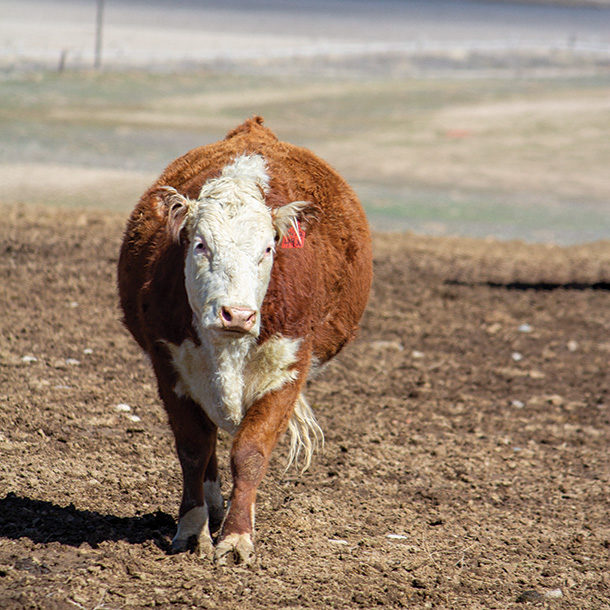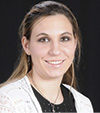When it comes to a cattle operation’s profitability and efficiency, reproductive life is one of the most important metrics for a brood cow. A continuous calving program with timely rebreeding contributes to a better cash flow and easier management.
But because we don’t live in a perfect world, the issue of late-calving cows will always be something for beef producers to consider. Since prevention is easier than treating the issue, producers should be aware of what makes late cows prone to late calving and when to cull or keep problematic animals.
When discussing ideals, a cow should calve soon enough that she naturally returns to estrus in time to meet the calving window for the subsequent breeding season.
According to Chip Kemp, director for the American Simmental Association and International Genetic Solutions commercial and industry operations, the general recommendation is: Cows should have at least 45 to 60 days between calving and rebreeding.
“For example, if your breeding season starts on May 15, then your last-calving cows should be done by the end of March,” he says.
What constitutes a “late calver” will depend on the established breeding window. On most operations, those range anywhere from 45 to 90 days long.
“These cows are habitual offenders of cycling late,” says Heather Gessner, an extension specialist with South Dakota State University. “But if we’re trying to do some profit increases or labor reductions, we want to try to move that herd up closer.”
Reasons she’s calving late
There are multiple reasons an animal could be calving late, and some of them you might be able to correct with management. One of the most common, according to Dan Busch of Select Sires, is a poor body condition score (BCS).
“Cows in thin body condition take longer to start cycling after calving,” he explains. “That can be prevented by making sure they put weight on in plenty of time before they calve next.”
While genetics can certainly be a viable factor to an individual cow’s fertility and cyclicity, Kemp notes that environment can sometimes be a bigger role. He says that genetics can contribute to early conception, but the maintenance of a pregnancy in the later stages is much more reliant on the environment. For example, a cow’s BCS and fat reserves can influence the length of her postpartum. Age also has an influence.
“[Yearling] first-time calvers are the hardest group to breed back because they are trying to recover from calving on top of still maturing and growing,” he says. “A practical way to help them keep up with the older cows is to start their breeding season two weeks before the mature cow herd and only keep heifers who conceived early in the breeding season.”
Gessner adds that weather events can also impact a cow’s ability to cycle. For example, unexpected early spring blizzards may suppress an animal’s energy and take her longer than usual for her system to settle back into its normal cycling rhythm post-calving.
Catching her up
There are many simplistic tools to help late calvers “catch up” with the rest of the herd. One of the most powerful of them is to simply add better body condition to a problematic cow from the time she’s weaned her last calf through her final trimester. Specifically, an ideal BCS for these rebreeding is between 4 and 6.
“Also ensure vaccination protocols are up to par for the area of the country they are in,” adds Busch. “You can also use some estrous synchronization protocols to help ‘jump-start’ cows to cycle earlier than they typically would. These type of programs would contain a progestin (MGA or CIDR-based programs) to help cows cycle earlier.”
When using synchronization protocols, while effective in their own right, producers should also pay special attention to how these animals recover in the postpartum period.
“Her body needs to recover internally,” notes Gessner. “We can use some of those lutelyse protocols to move that up, but we still want to make sure we’re taking care of the cow as we’re doing that.”
To keep or cull
Managing late calvers is definitely harder than trying to get them started off right as heifers, but keeping them calving as close to the main group as possible can save them from being culled.
Deciding on when to cull a particular animal or keep her can be tricky. Kemp says cows should be pregnant and able to keep a pregnancy to stay in the herd, but some of that depends on the length of an operation’s particular breeding season. In some cases, an animal might be so behind there’s no way she will be able to rebreed in time with the next established season.
“You can use an estimate of 285 days for gestation and calculate when a cow will calve,” he explains. “If she will calve less than 30 days before the next breeding season, consider culling her, as it will be difficult [but not impossible] for her to conceive in the next season. I would never make this a rule though, as there are so many things to consider with culling decisions.”
Ways to prevent late calving?
Busch suggests the best way to prevent late-calving cows in the first place is to keep on a strict reproductive management program.
“There are estrous synchronization programs that can get 50 to 60-plus percent of your cows or heifers pregnant via artificial insemination on the first day of the breeding season, [which] helps you front load the calving season to get more calves on the ground early, thus resulting in older and heavier calves at weaning.”
Going another step further, Kemp recommends that the breeding season for first-calf heifers open about two weeks prior to the rest of the herd, with special attention given to their BCS and other fertility criteria. After the close of the breeding window, bulls should be pulled.
Rachel Endecott, a beef extension specialist with Montana State University, suggests producers implement the following protocols each year to reduce incidences of late calving:
- Take a hard look at your replacement heifer development and breeding strategies.
- Look at your calving distribution and preg rates by age group to see if there are age groups that need attention.
- Fertility test your bull battery. Every year.
- Turn out enough bulls to get cows bred during the busiest stretch of the breeding season.
- Consider estrous synchronization.
- Assess body condition and take steps to improve condition of thin cows when it’s most efficient.
- Lastly, remember that fertility is a lowly heritable trait. Thus, management (environment) has a large impact. You can make huge strides in fertility just by using a crossbred cow base.













